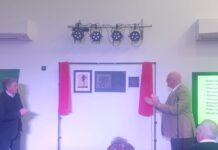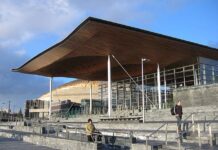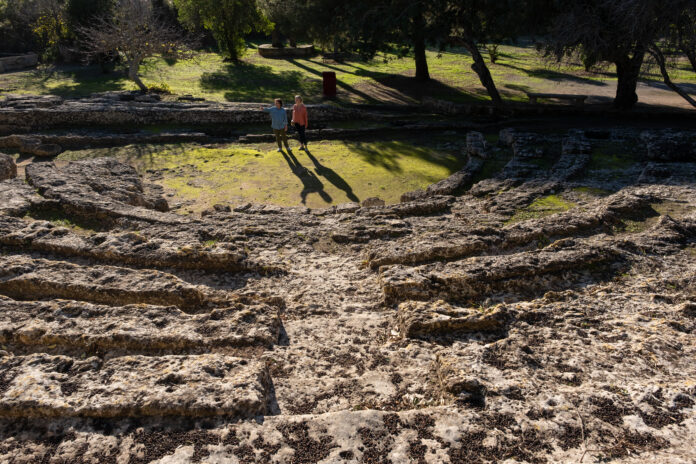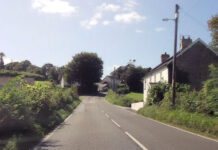
The Fundació Mallorca Turisme is launching the new Mallorca Archaeology Center, which will showcase objects discovered in nearly 3,000 archaeological sites and excavations on the island.
Mallorca’s archaeological heritage is starting to gain special prominence. The institution has initiated a project to centralise the archaeological activity on the island. The new Mallorca Archaeology Center will house over 40,000 pieces, which until now have been in storage, and will provide support to researchers looking to discover the island’s historical legacy.
Sa Tanca de Can Domènech in Alcudia will be the centre for the artifacts from various island sites, allowing visitors to witness authentic wonders that date back to the prehistoric period.
The island of Mallorca has nearly 3,000 archaeological sites and excavations, most of which are declared Cultural Heritage Sites or Historic Artistic Complexes, providing a fascinating way to explore early settlements, populations, historical ways of life.
Talayotic Settlement of Ses Païses
Dating back to around 1000 B.C., this is one of the most extensive and well-preserved settlements in Mallorca. Among its major attractions are a stone wall enclosure and the rocky structures within, many of which are still awaiting excavation.
It has an elliptical shape with a perimeter of over 350 metres of wall. Excavations of the site that can be found are the talayot and its adjoining rooms, as well as more recent constructions such as the wall, dated to around the 6th and 5th centuries B.C. It is assumed that the settlement was abandoned after the arrival of the Romans in the 1st century B.C.
Roman City of Pollentia
This site dates back to 123 B.C. and was declared a Historic Artistic Complex in 1946. Among the excavations, there are three main areas: La Portella, the Forum, and the Theatre.
La Portella is a residential area, showcasing architectural structures from the Roman era in Mallorca. Three different houses can be found: the Casa dels Dos Tresors, Casa del Cap de Bronce, and Casa del Noroest, with the first one standing out as particularly special, with its well-preserved original layout.
The Forum represents what was the civic, religious, and commercial centre of the city of Pollentia, and the remains of the Capitolium Temple dedicated to the gods Jupiter, Juno, and Minerva can still be discerned. Furthermore, the theatre, dating from the 1st century, still holds part of the cavea, the orchestra, and the stage, as well as the remains of a necropolis on its structure.
The Prehistoric Settlement of S’Hospitalet Vell
The archaeological site located in Manacor is the ideal way to get up close to the Talaiotic culture of Mallorca. Through the Manacor History Museum, the site has been adapted for the general public to be able to visit, aiming to further educate people on the island’s historical past.
This complex features structures such as two naviforms from the Bronze Age, a talayot, attached rooms from the same era, and a rectangular enclosure from the Iron Age.
For some of the artifacts, replicas that can be touched can be found in the museum, as well as a virtual tour of the site that provides an extensive learning experience for visitors.
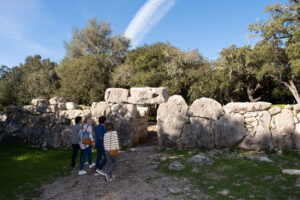
Es Turassot
This site, located in the town of Costitx, is home to up to six sets of navetas, as well as a large collection of fauna from the Balearic Bronze Age, giving Es Turassot significant importance in Mallorca’s archaeology.
In 2021, excavations were resumed, revealing more than 20,000 remains, of which over 3,500 animal bones were identified. Additionally, architectural structures were found, along with a set of elements pointing to a possible use of one naveta as a communal butchery.
Capocorb Vell
This is one of the most extensive Talaiotic settlements in Mallorca, covering an area of more than 6,000 square meters, and is also one of the best-preserved. This walled enclosure contains five talayots, accompanied by dwellings built in a later period, in the 6th century B.C. It is believed that the core of this complex also had a sanctuary, which has not survived due to surrounding constructions.
The site represents what was an atypical settlement, as its inhabitants resided here until the Middle Ages, undergoing multiple and frequent modifications. It has also been speculated that the remains belonged to a ceremonial area close to the population.
Help keep news FREE for our readers
Supporting your local community newspaper/online news outlet is crucial now more than ever. If you believe in independent journalism, then consider making a valuable contribution by making a one-time or monthly donation. We operate in rural areas where providing unbiased news can be challenging. Read More About Supporting The West Wales Chronicle












